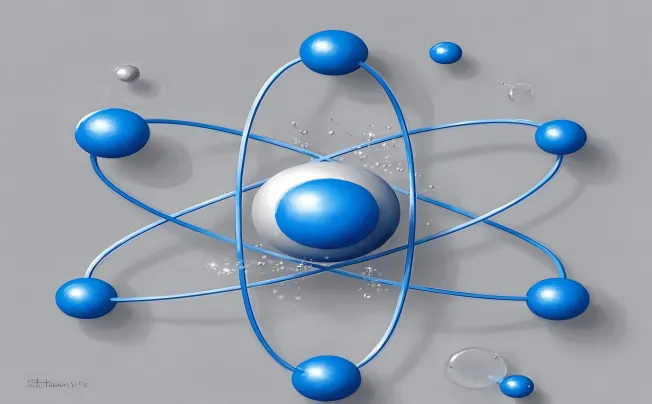In today's world, where environmental consciousness is becoming increasingly prevalent, the choice of materials we use in our daily lives significantly impacts sustainability. Two prevalent materials that often find themselves in comparison are silicone and plastic.
Definition of Silicone and Plastic
Silicone is a synthetic material made up of silicon, oxygen, carbon, and hydrogen atoms. It is known for its versatility and durability, with properties such as heat resistance, flexibility, and non-toxicity.
Silicone finds application in various industries ranging from medical devices to kitchenware and electronics. On the other hand, plastic refers to a group of synthetic polymers derived from petrochemicals or renewable sources.
Plastics are widely used due to their lightweight nature, versatility, and cost-effectiveness. They are commonly found in packaging materials, consumer goods, and various other everyday products.
Growing Concern for Sustainability in Materials
The mounting concern for sustainability in materials stems from the detrimental impact that traditional manufacturing processes have on the environment. The over-reliance on non-renewable resources like crude oil for plastic production has led to issues such as pollution and excessive waste accumulation.
Consumers are becoming more conscious of the lifecycle impacts of the products they use and are seeking alternatives that align with environmentally friendly practices. This shift towards sustainability has prompted a deeper examination of materials like silicone as potential substitutes for conventional plastics.
Overview of Silicone and Plastic
Silicone:
Silicone is a versatile polymer that consists of silicon, oxygen, carbon, and hydrogen atoms. Its unique composition gives it remarkable properties that make it highly desirable for various applications.
One of the key advantages of silicone is its exceptional heat resistance, allowing it to withstand extreme temperatures without losing its structural integrity or releasing harmful substances. This attribute makes silicone a preferred material in industries such as aerospace, automotive, and electronics where thermal stability is crucial.
Flexibility is another notable characteristic of silicone. It possesses excellent elasticity and can bend or stretch without breaking, which makes it suitable for products requiring durability and long-lasting performance.
Moreover, silicone exhibits exceptional durability even under harsh conditions such as exposure to UV radiation or chemicals. This resilience contributes to its extended lifespan and reduces the need for frequent replacements.
In terms of safety, silicone stands out due to its non-toxic nature. It does not leach harmful chemicals into food or other materials with which it comes into contact.
Consequently, silicone has become synonymous with kitchenware like baking molds and utensils. Furthermore, medical devices frequently incorporate silicone due to its biocompatibility and hypoallergenic properties.
Plastic:
Plastic encompasses a wide range of polymers derived from petrochemicals or renewable sources such as plant starches. Its versatility arises from the potential variation in composition and physical properties achieved by modifying production techniques or introducing additives during manufacturing processes. The most common types of plastic are derived from petrochemicals obtained through the refining process of crude oil or natural gas extraction.
These synthetic plastics offer exceptional versatility in shaping methods such as injection molding or extrusion due to their ability to melt at specific temperatures while retaining their structural integrity when cooled. One prominent characteristic that distinguishes plastic from other materials is its lightweight nature.
The low density enables the creation of lightweight components used extensively in industries like automotive manufacturing and packaging materials. Plastic's cost-effectiveness makes it an attractive choice compared to alternative materials like metal or glass.
The low production costs associated with plastic contribute to its widespread use in consumer goods ranging from household items like bottles or containers to electronic devices housing components. Overall, both silicone and plastic possess distinct qualities that have made them invaluable resources across numerous industries Each material has carved out a specific niche based on its inherent characteristics resulting in widespread application possibilities.
Environmental Impact Comparison
Production:
Silicone: When examining the environmental impact of silicone production, it is important to consider the energy requirements and manufacturing processes involved. The extraction of silicon from silica, which is the primary component of silicone, demands a significant amount of energy input.
This energy demand is primarily due to the high temperatures required to extract silicon in its pure form. Additionally, the manufacturing process of silicone involves various chemical reactions and further high-temperature treatments.
However, it is worth noting that some silicone production methods have emerged that utilize renewable resources such as bio-silicone. These innovative approaches aim to reduce the reliance on fossil fuels and minimize environmental impact.
Plastic: In contrast to silicone, plastic production heavily relies on petrochemical extraction, which contributes to greenhouse gas emissions and exacerbates climate change concerns.
The manufacturing process for plastic involves refining crude oil or natural gas into polymers through chemical reactions. Unfortunately, there is limited use of renewable sources in plastic production at present, which hinders efforts to mitigate its ecological consequences.
Disposal:
Silicone: While silicone itself is non-biodegradable, it possesses certain advantages over traditional plastics when it comes to disposal options.
Silicone can be recycled into other products through specialized recycling programs offered by some manufacturers or waste management facilities. However, widespread recycling infrastructure for silicone remains relatively limited compared to plastic recycling facilities globally.
Incineration is another disposal method for silicone; however, this process releases toxic gases like formaldehyde and carbon monoxide into the atmosphere. If disposed of in landfills, silicone exhibits slow degradation rates leading to long-term accumulation.
Plastic: One of the most alarming aspects of plastics' environmental impact lies in their non-biodegradability and persistence in our ecosystems for centuries.
While efforts have been made globally towards plastic recycling initiatives, overall recycling rates remain disappointingly low due to challenges such as sorting complexities and lack of consumer awareness regarding proper disposal practices. Consequently, a substantial amount still ends up in landfills or escapes into natural environments through improper waste management systems.








